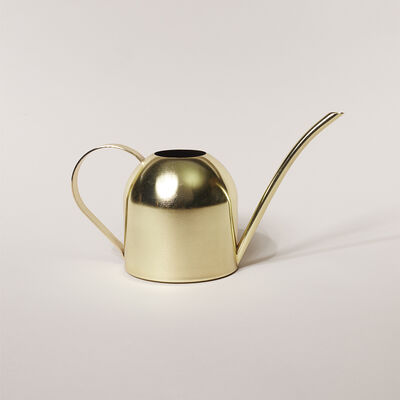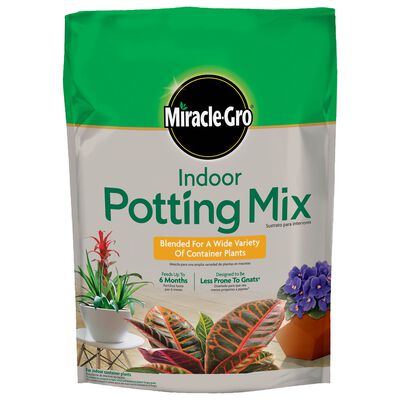
Your Guide To: Pilea Plant Care
Everything you need to know to care for this adorably perky plant (pronounced pie-lee-uh).
Seriously, have you ever seen a cuter plant? There's something about its smooth, cartoonishly round leaves sitting so perkily at the end of each stem that make the pilea undeniably endearing. Also known as a pilea peperomioides plant, Chinese money plant, UFO plant, pancake plant, or missionary plant, pilea is one of those indoor plants whose charms are as numerous as its nicknames. Place it where its bright green leaves can be the star (such as the centerpiece of a minimalist tablescape), and this plant's quirky good looks will elevate your surroundings-and your mood.
One of the benefits of houseplants like Pilea is that they are easy to care for and are an excellent choice for all plant lovers. In this guide, we dive into all things pilea plant care, common issues, and how to create the best environment for your money plant.
How To Keep A Pilea Plant Happy
Pilea is not only easy on the eyes, it's easy to care for, too. In fact, it was long considered a mere weed (gasp!) in the mountainous regions of China, from where it originally hails. Legend has it that a missionary traveled back to his native Norway with a pilea cutting in 1946; it grew and was propagated further, eventually making its way to America in the '70s-and now home to you.
How to Choose the Right Soil for My Pilea
When it comes to selecting the right potting mix for your pilea, it should provide these three things:
- Your potting mix should hold enough water for the roots to drink up
- Be rich in nutrients for good plant growth
- Be well-drained so that the roots can breathe
To prevent root rot use any of our amazing potting soil mixes, you can also mix in perlite.
When Do I Need To Repot My Pilea?
Another tip for taking care of your pilea is to repot them annually. It's important to know the signs for when to repot your plant. Over time, the soil around your pilea's roots tends to compact and break down. Refreshing the potting mix, even if your pilea doesn't need a larger pot, gives it the best environment to thrive. If your pilea plant becomes root-bound, it's a clear sign that it's ready for a larger pot.
How Much Lighting Does a Pilea Need?
Pilea likes bright but indirect light. Too much sun may scorch its leaves, and too little may cause the leaves to turn darker green. And since the pilea's leaves are a big part of what makes it so dang adorable, you don't want to compromise their vibrancy. Try placing the plant near a sunny window where it can enjoy a warm glow but not searing rays.
How Do I Know When To Water My Pilea?
How often should you mist your houseplants? A pilea plant will likely need a drink about once a week, when the top two inches of soil dry out. Keep your eyes open for drooping stems and leaves-your new friend is probably telling you it's thirsty. To avoid a parched pilea, pick up a plant moisture indicator so you know exactly when to water.
When you do, pour water in a slow, circular pattern so your pilea gets an even soaking all the way down. Any excess will flow through the drainage holes and into the tray at the bottom of your plant-be sure to empty it afterwards so your pilea doesn't end up sitting in water. Your pilea houseplant can sometimes have water stains or white spots on its leaves. These are salts and compounds found in tap water. To remedy this, use filtered water or tap water left out to sit overnight.

How Do I Use Plant Food for My Pilea?
Typically, plants need more food spring through summer, when they're in active growth mode. (Even inside, they still know what season it is.) We've included plant food spikes with your pilea; use 3 spikes once a month from April to September, and then move to feeding it every other month from October to March.
What Is a Pilea's Ideal Environment?
As long as it's not getting sunburned or shaded out, your pilea should flourish just about anywhere. A pilea can also make a great office mate, since it can adapt to lower light areas. Note, its leaves will become darker and the growth will be more spread out in these types of environments.
How Do I Prune and Maintain My Pilea?
If any of your pilea's leaves become discolored, simply snip them off where they meet the stem. Otherwise, it shouldn't need pruning unless you want to reshape it.
Cleaning your houseplants will keep them healthier for longer. Dust and dirt can block light and air, so giving your pilea a gentle dusting with a soft cloth every now and then, is beneficial so its saucer-shaped leaves can properly absorb the light. Also, rotate it a quarter-turn each time you water so it grows evenly.
One of the many delights of keeping a pilea is that when it's content, it will produce "pups," which can be propagated once they're about 2 to 3 inches in size. To remove them from the mother plant, gently move the soil from around the base of the pup and follow the root down about 1 inch (you want to keep some root attached). Then use a clean, sharp knife to cut the pup away from the mother plant. Place it in a small pot with fresh soil and keep it moist until new leaves sprout, a sure sign it's well-rooted. And in no-time, you'll have a new plant to add to your home.

How To Address Common Pilea Issues?
If you see brown spots or marred edges on your pilea's leaves, or its leaves seem to drop off frequently, you may be overwatering it. Wait until the soil feels dry before watering it again, and empty the saucer of any excess water when you do give it a drink. If you notice scorched leaves, your pilea is probably getting too much direct light and may need a change of environment. Yellow leaves may indicate that your pilea might not get enough direct sunlight or need more fertilizer. Yellow, wilting, or curling leaves can also be a common sign of severe infestation and can indicate that your houseplant may be suffering from Fungus Gnats. In order to prevent fungus gnats, you will want to allow your houseplants to dry a bit between waterings, cover drainage holes and any exposed soil with sand, or sprinkle mosquito bits on your soil to help kill off any potential larvae from growing.
What to Do If You Still Have Questions
Our team of plant gurus is here for you if you need some advice about your pilea or just buying houseplants online. With a vast array of plants for delivery, you'll be sure to find the right option to elevate your home space. Visit our website, email at [email protected], or chat live with a Greendigs representative to get all growing questions answered.
Sources
Pilea. Choosing The Best Soil For Pilea Peperomioides.
Leaf Envy. Chinese Money Plant.
Simply Living NC. Fungus Gnats How to Get Rid of Pilea Houseplant Pests.

